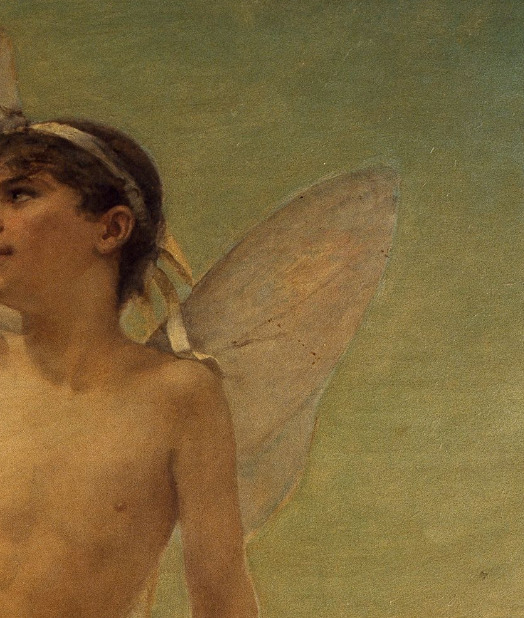#Louis Maeterlinck
Explore tagged Tumblr posts
Text

Louis Maeterlinck (Belgian, 1846-1926) Cruel Love, 1889 Museum of Fine Arts, Ghent
#Louis Maeterlinck#Belgian art#Cruel Love#1889#art#fine art#european art#classical art#europe#european#fine arts#oil painting#europa#mediterranean#Belgian#Belgium
358 notes
·
View notes
Text
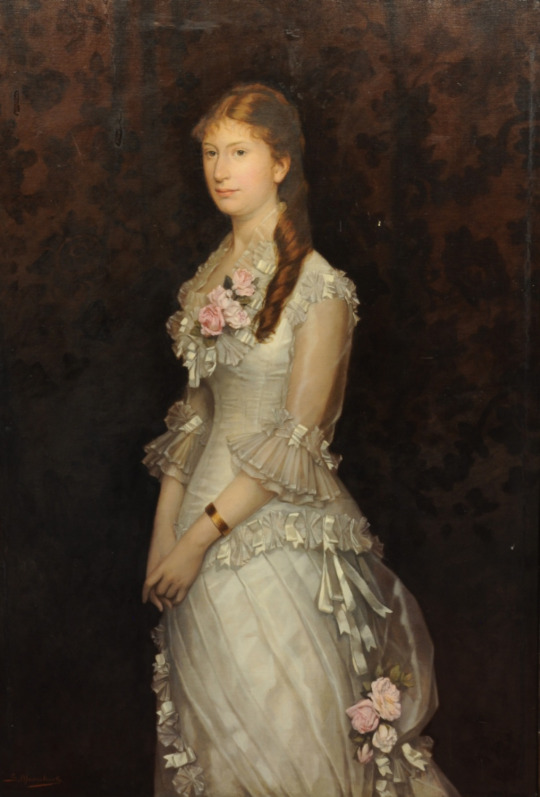
Portrait of a woman standing by Louis Maeterlinck, 1878-1890s
70 notes
·
View notes
Photo

Artist / maker Louis Maeterlinck (painters (artists)) Periods 19th century, 20th century Collection Museum of Fine Arts Ghent THE CRUCIFIXION
5 notes
·
View notes
Text
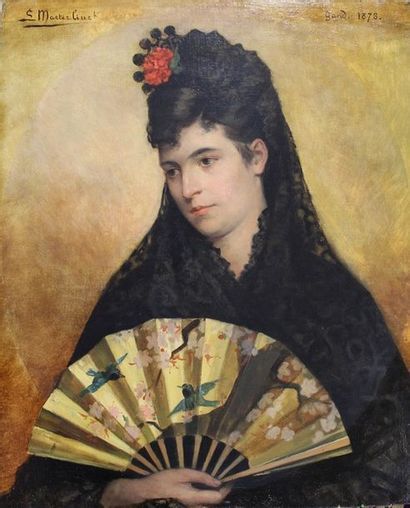
Louis Maeterlinck (1846-1926) - Portrait of a lady with a fan, 1878
2 notes
·
View notes
Text
A colloquio con Juan Carlos Onetti: un'intervista
Juan Carlos Onetti. Ernesto Franco : L’outsider dalle vite breviPer Juan Carlos Onetti la scrittura e il racconto, pur orchestrati tramite una raffinata strumentazione formale, sono elaborazione immediata del reale: un modo parallelo per farne esperienza e non soltanto per doppiarlo. Nato nel 1909 in Uruguay Onetti è cittadino, per buona parte della sua vita, di due tra le metropoli più…

View On WordPress
#Ernesto Franco#Gabriel García Márquez#Georges Simenon#Henry James#Jorge Luis Borges#Juan Carlos Onetti#Marcel Proust#Maurice Maeterlinck#Robert Louis Stevenson#William Faulkner
1 note
·
View note
Text
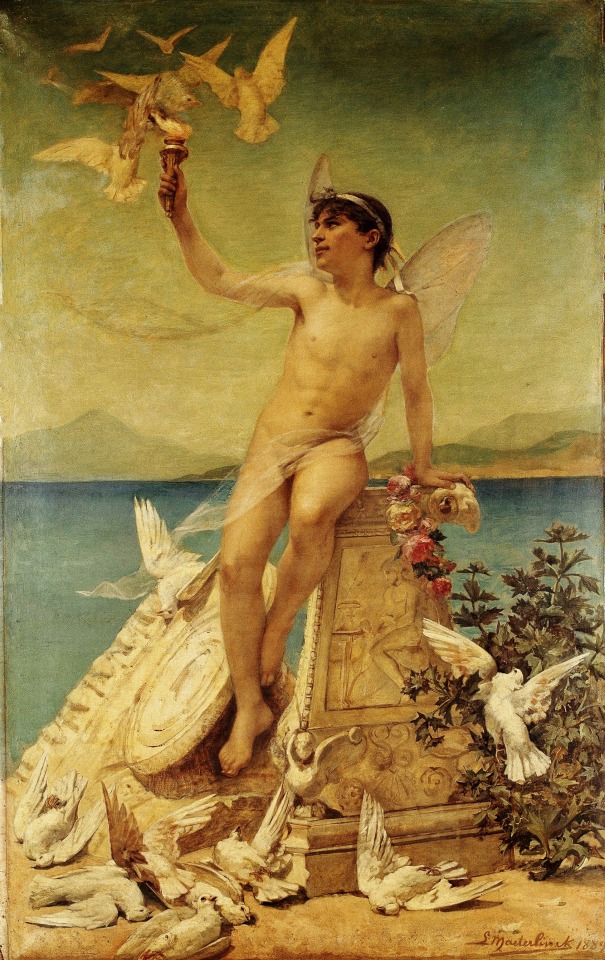
Cruel Love. 1889. Louis Maeterlinck Belgian 1846-1926. oil/canvas. http://hadrian6.tumblr.com
1K notes
·
View notes
Text
Ok, I am the only one who became obsessed with Pelléas and Mélisande after listening to this?
For context: "Pelléas and Mélisande (French: Pelléas et Mélisande) is a Symbolist play by the Belgian playwright and author Maurice Maeterlinck. It's about the forbidden, doomed love of the title characters and was first performed in 1893.

The work never achieved great success on stage, apart from operatic setting by Claude Debussy, but was at the time widely read and admired by the symbolist literary elite, such as Strindberg and Rilke. It inspired other contemporary composers, like Gabriel Fauré, Arnold Schoenberg, Jean Sibelius, and Mel Bonis.
Synopsis: Golaud finds Mélisande by a stream in the woods. She has lost her crown in the water but does not wish to retrieve it. They marry, and she instantly wins the favor of Arkël, Golaud's grandfather and king of Allemonde, who is ill. She begins to be drawn to Pelléas, Golaud's brother. They meet by the fountain, where Mélisande loses her wedding ring. Golaud grows suspicious of the lovers, has his son Yniold spy on them, and discovers them caressing, whereupon he kills Pelléas and wounds Mélisande. She later dies after giving birth to an abnormally small girl. Source: Wikipedia.
A very interesting aspect is that it is a Symbolist play adapted numerous time, but especially by Debussy as an opera, that I'm sure Lestat has **convinced** Louis to watch 😄
Also on Wikipedia: "A brief summary of the play will concentrate best on Mélisande. At the beginning of the play she has just escaped from a failed marriage that has so traumatized her that she scarcely remembers either it or her past. She marries Golaud with no choice of her own, and remains essentially distant from him. The audience realize she is falling in love with Pelléas long before she does. On her deathbed she has quite forgotten her final meeting with Pelléas and his death, and dies without realizing that she is dying. This and the whole play—for none of the other characters are wiser—expresses a sense that human beings understand neither themselves nor each other nor the world. The problem is not simply human blindness, but the lack of a fixed and definable reality to be known. This is the Maeterlinck who paved the way for the plays of Samuel Beckett.
A key element in the play is the setting, whether visible in the stage scenery or described in the dialogue. The action takes place in an ancient, decaying castle, surrounded by deep forest, which only occasionally lets sunlight in, and with caverns underneath it that breathe infected air and are in danger of collapse. As numerous critics have pointed out, all this symbolizes the dominating power throughout the action of a destiny fatal to mankind. "
I just love how specific this is, how appropriate and how evocative the whole story is of Louis and Lestat, and I love how Louis does remember it and includes it in his Dreamstat version of it in Paris 🙈

#loustat#amc immortal universe#lestat#lestat x louis#louis de pointe du lac#lestat de lioncourt#come to me#daniel hart#amc iwtv#iwtv#iwtv soundtrack#come to me again#iwtv ost#pelléas and mélisande#Spotify
31 notes
·
View notes
Text
Rewind the Tape —Episode 6
Art of the episode
Just like we did for the pilot and for episodes two, three, four, and five, we took note of the art shown and mentioned in the 6th episode while we rewatched it.

Love's Coming-Of-Age: a series of papers on the relations of the sexes
Edward Carpenter, 1896
Carpenter was an English writer and philosopher, and an early activist for gay rights and prison reform. In the opening of the episode, Louis is shown to be reading his essay "Marriage, a retrospective" you can read this essay, as well as the rest of the book, in the Internet Archive, here.

The Poems of Emily Dickinson
First collected and published in 1890
Dickinson was an American poet who published only ten of her approximate 1800 poems during her life. Before her passing, Dickinson had asked her sister to burn her writings, and you can read more about how her sister Lavinia came to publish them instead, with major editions, in this LitHub piece.
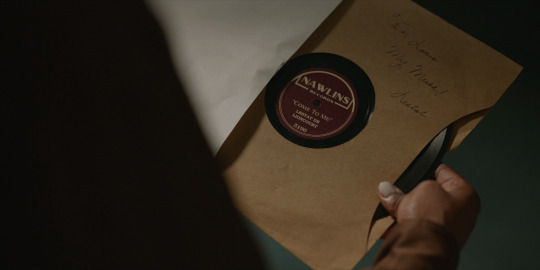
Pelléas et Mélisande
Claude Debussy & Maurice Maeterlinck, 1902
Referenced in Lestat's lyrics, this is an opera in five acts about a love triangle, which ends in tragedy for both its titular heroes, the mysterious Mélisande and her husband's younger brother, Pélleas. An interesting detail: after Pelléas and Mélisande's demise, they are survived by their daughter.
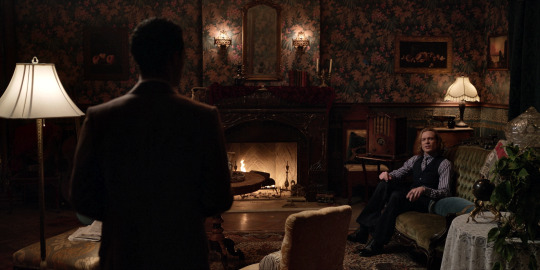

Three Peaches on a Stone Plinth
Adriaen Coorte, 1705
Coorte was a Dutch Golden Age painter of mostly small, intimate still lifes, and little is known of his life.
Still Life with Blue Vase and Mushrooms
Otto Scholderer, 1891
Scholderer was a German painter of portraits and still lifes, and was acquainted with another painter we've seen already, Manet.
Cumulus Clouds, East River
Robert Henri, 1901-1902
Henri was an American painter, first featured in episode one.
[All three identified by @diasdelfuego.]
After Lestat moves back into the house, new furniture, new decorations and new art appear all over, leaving little trace of the previous domestic violence (that is, except for the "reminders" that Claudia insists on keeping).

La Nausée
Jean-Paul Sartre, 1938 [Identified by @saintarmand, here.]
A recent release at the time of this scene, this novel by French philosopher Jean-Paul Sartre deals with an isolated and melancholy protagonist.

Baby Strange
T. Rex, 1972
The song playing during Louis and Daniel's first meeting is by an English band, an early example of the glam rock genre.
If you spot or put a name to any other references, share via DM or in the reblogs, and let us know if you'd like us to add them with credit to the post!
Starting tonight, we will be rewatching and discussing the finale, ...The Thing Lay Still. We hope to see you there! And, if you're just getting caught up, learn all about our group rewatch here ►
#louis de pointe du lac#the vampire claudia#claudia iwtv#the titular vampire#spark in the dark#vampterview#interview with the vampire#iwtv#amc interview with the vampire#interview with the vampire amc#amc iwtv#iwtv amc#IWTVfanevents#rewind the tape#like angels put in hell by god#analysis and meta#art of the episode
33 notes
·
View notes
Text
I only recently clocked the Pelléas and Mélisande ref in the “Come to Me" lyrics (I had to look it up because I was like ‘what the heck is Lestat singing here?’): “Ruin each other/ Like star-crossed lovers/ Your Pelléas, my Mélisande.” At first glance the ref fits with the star-crossed lovers line—but why this pair?
The fact that they’re French helps (versus, for example, Romeo and Juliet), and Pelléas et Mélisande, based on a play by Maeterlink, is also Debussy’s only opera and Lestat loves opera. But it’s the play that’s the real easter egg. From the Wikipedia page the heroine suffers memory issues, and “...the whole play…expresses a sense that human beings understand neither themselves nor each other nor the world. The problem is not simply human blindness, but the lack of a fixed and definable reality to be known. This is the Maeterlinck who paved the way for the plays of Samuel Beckett.“ The play’s subject matter, up to its prelude to Beckett--who pops up in the vampire Sam’s Waiting for Guido/Godot--resonates with the show’s central grappling with meaning (and meaning-making in the absence of predetermined meaning/telos).
Lestat seems to be casting himself as Pelléas and Louis as Mélisandre: “At the beginning of the play [Mélisandre] has just escaped from a failed marriage that has so traumatized her that she scarcely remembers either it or her past. She marries Golaud [Pelléas' brother, thus the star-crossed part] with no choice of her own, and remains essentially distant from him. The audience realize she is falling in love with Pelléas long before she does.” I don’t want to offer too much analysis here, but strong metaphorical parallels could be made - including how Pelléas and Mélisandre’s love offers them meaning in an otherwise meaningless existence (!)

18 notes
·
View notes
Text
De la fascination des insectes sur les savants
Chercheur de l’Université de Neuchâtel, Thibaud Martinetti publie un essai fouillé sur le pouvoir de fascination qu’exercent nombre d’espèces aujourd’hui menacées. Où l’on apprend que science et poésie ont longtemps cheminé ensemble
"Les Muses de l’entomologie", voir les insectes avec les yeux de l’amour - Le Temps
Claire Jaquier
Publié le 12 août 2023
"On fête cette année le bicentenaire de Jean-Henri Fabre (1823-1915), naturaliste et homme de lettres provençal surnommé le «Virgile des insectes», dont les Souvenirs entomologiques ont joui d’une audience internationale. Ce n’est pas cette circonstance, cependant, qui motive la publication de la vaste enquête que Thibaud Martinetti a conduite sur l’histoire de l’entomologie et de sa vulgarisation aux XVIIIe et XIXe siècles, des Mémoires pour servir à l’histoire des insectes (1734-1742) de Réaumur à La Vie des abeilles (1901) de Maurice Maeterlinck.
Si l’auteur consacre à Fabre un chapitre entier, c’est une raison moins occasionnelle qui est à l’origine de son projet. Sensible au sort d’une biodiversité menacée – on peine à recenser les espèces d’insectes qui disparaissent –, ce jeune chercheur de l’Université de Neuchâtel s’est lancé dans une entreprise qui fait écho à une préoccupation contemporaine. Sa thèse, soutenue à l’Université de Bâle, prend acte en effet d’un engagement qui traverse aujourd’hui la biologie, la philosophie et la littérature, en faveur d’une science qui renonce au modèle expérimental et objectivant au profit d’un rapport au vivant qui tienne compte des interdépendances entre l’homme et les milieux naturels."
(...)
[Image] Une planche tirée de «L’Histoire naturelle des lépidoptères d’Europe», publié par l’entomologiste français Louis Marie Alphonse Depuiset en 1867 - DR
0 notes
Photo
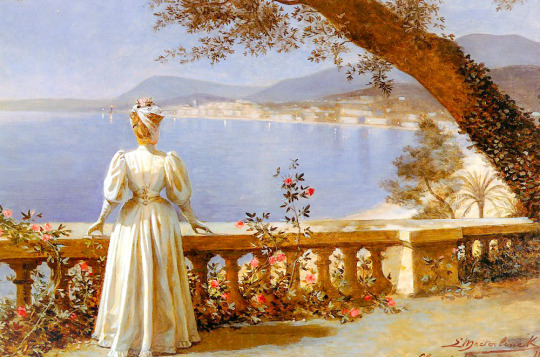
Clair De La Lune, Louis Maeterlinck (Belgian, 1846–1926)
2K notes
·
View notes
Photo



― Boris Pasternak, Doctor Zhivago
[Louis Maeterlinck (1846-1926, Belgium): Clair de la lune]
#boris pasternak#doctor zhivago#lara antipova#louis maeterlinck#clair de la lune#clair de lune#art#art history#russian literature#classic literature#classic lit art#classic lit quotes#litedit#art details#*mine#literature#light academia#light academic aesthetic#romance#cottagecore
236 notes
·
View notes
Photo

Louis Maeterlinck Allegory of Peace
69 notes
·
View notes
Text

Louis Maeterlinck (1846-1926) - The Crucifixion
0 notes
Photo

Découvrons ce soir un nouveau dessin de Jeanne Devidal ! Et il y en aura d'autres... Celui-ci est dessiné sur un feuillet de papier épais, plus grand que le dessin que je vous ai montré dans ma Chronique du 29 mars 2020... Qu'est-ce qu'il représente ? Un personnage, sans nul doute... Est-il inspiré de ce livre "l'hôte inconnu" de Maurice Maeterlinck, qui était son livre de chevet ? Il ressemble étrangement à l'une de ces gravures sur bois de Louis-William Graux... © Famille Devidal
#saintlunaire#ladamedesaintlunaire#jeannedevidal#artbrut#habitantspaysagistes#dessinsspirites#spiritisme#lafolledesaintlunaire#devidal#maurice maeterlinck#l'h��te inconnu#louis-william graux#dessin
0 notes
